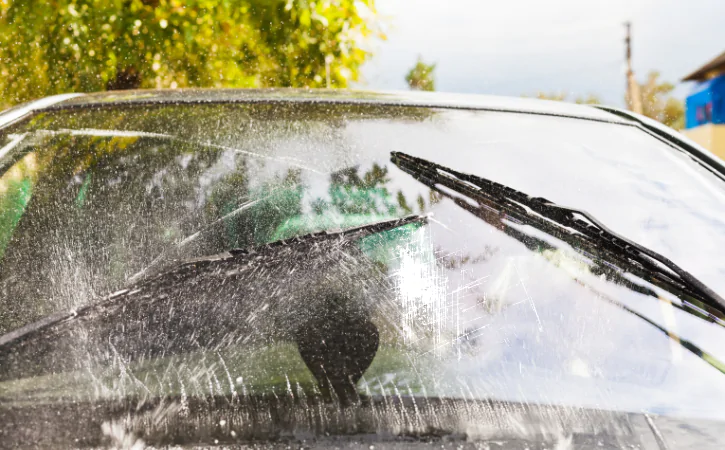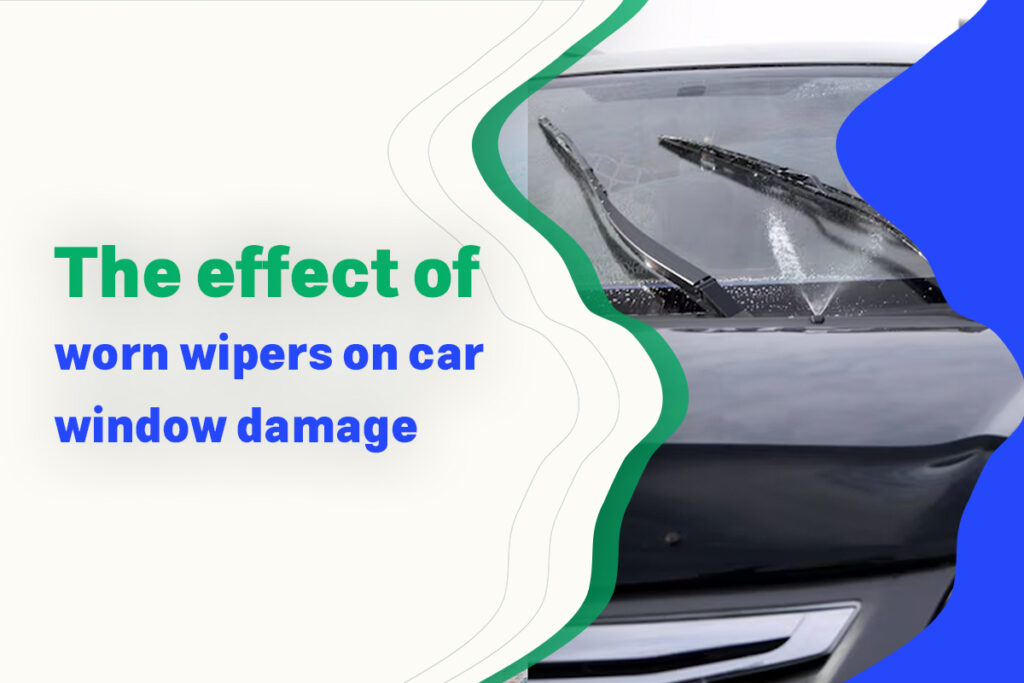Defective and worn-out wipers can easily damage your car’s windshield and prevent you from having a clear view of the road. What effect do worn wipers have on your windshield? What factors cause car wipers to wear out? In this article from ProCarGlass, we will address these two questions.
Damages caused by faulty and worn wipers
A damaged wiper can have different effects on the windshield, such as:
Scratches on the glass:
As the wiper blade rubber wears out, the metal part comes into contact with the windshield surface, and if used, it will create scratches on the glass.
Incomplete movement of the wiper arm:
If the wiper arm is damaged due to factors such as heat, cold, or environmental impacts and loses its original shape, its movement on the windshield will not function properly.
Streaks on the windshield and annoying noises:
Due to deformation of the wiper and damage to the blade, when the wiper moves across the glass surface, the blade hits the windshield and, in addition to creating scratches, also produces unpleasant noises and streak marks on the glass.
Incomplete cleaning of the windshield:
Because of the deformation of the wiper arm, it does not move completely across the windshield surface, leaving parts of the glass unclean.

Increased scratches:
Using a damaged wiper and not replacing it can increase the scratches on the windshield to the point that, in addition to damaging the glass, it will also affect your visibility.
What factors cause wipers to get damaged?
Worn wiper blades:
Over time, and due to sunlight, rain, and snow, the lifespan of wiper blades decreases and they lose their natural shape.
Presence of sand or dust on the windshield surface:
If there is dust or sand on your car’s windshield and the wipers move across it without cleaning the surface first, the blades will get damaged, and the rubber will wear out.
Wipers moving on a frozen windshield:
When wipers move on a frozen windshield, they put too much pressure on the blade and the arm, which leads to damage.
Read more: Car glass damage based on temperature changes
Incorrect installation of wipers:
If wipers are installed improperly, the pressure and movement will be distributed unevenly across the windshield, causing damage not only to the wipers but also to the glass surface, leaving scratches.
Using wipers on a dry windshield:
It is best to wet the windshield before using the wipers so that friction is minimized and the wipers move smoothly across the surface. If wipers operate on a dry windshield, the friction increases, causing damage to the rubber blades and creating scratches on the glass.
How to prevent damage to wipers and windshields?
First, it is important to note that every device has a lifespan, and wipers are no exception. Heat, cold, snow, rain, and regular use all reduce their lifespan. Below are some tips to help you increase the life of your wipers and prevent windshield damage:
Inspect the wipers:
By checking your wipers and windshield regularly, you can ensure the blades are in good condition and that no scratches appear on the glass surface.
Keep the windshield clean:
By keeping the windshield surface clean and free from dust, you will not only prevent scratches but also protect the wiper blades from damage.
The effect of faulty wipers on driver visibility:
A damaged wiper, in addition to creating scratches, does not properly clean the windshield during rain or snow, which reduces the driver’s visibility. Also, the presence of too many scratches on the windshield causes sunlight to reflect, further reducing the driver’s field of vision.
Conclusion:
In this article from ProCarGlass, a provider of front, rear, and side car glass replacement and repair services in London, we reviewed the effects of faulty wipers on the windshield. We also provided solutions to increase the lifespan of wipers and prevent windshield damage. For car glass replacement and repair services, contact ProCarGlass.


